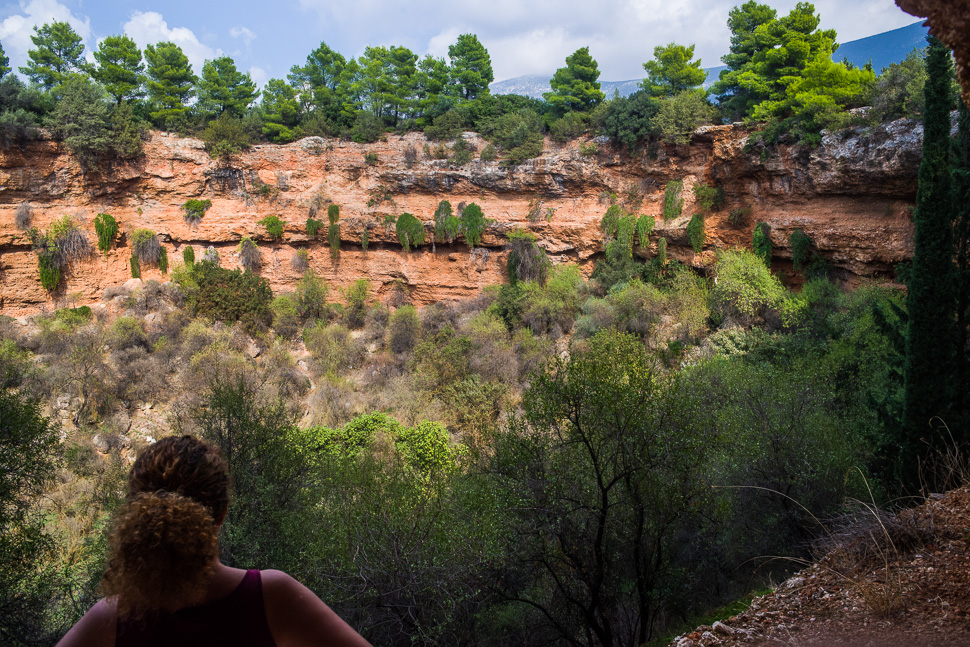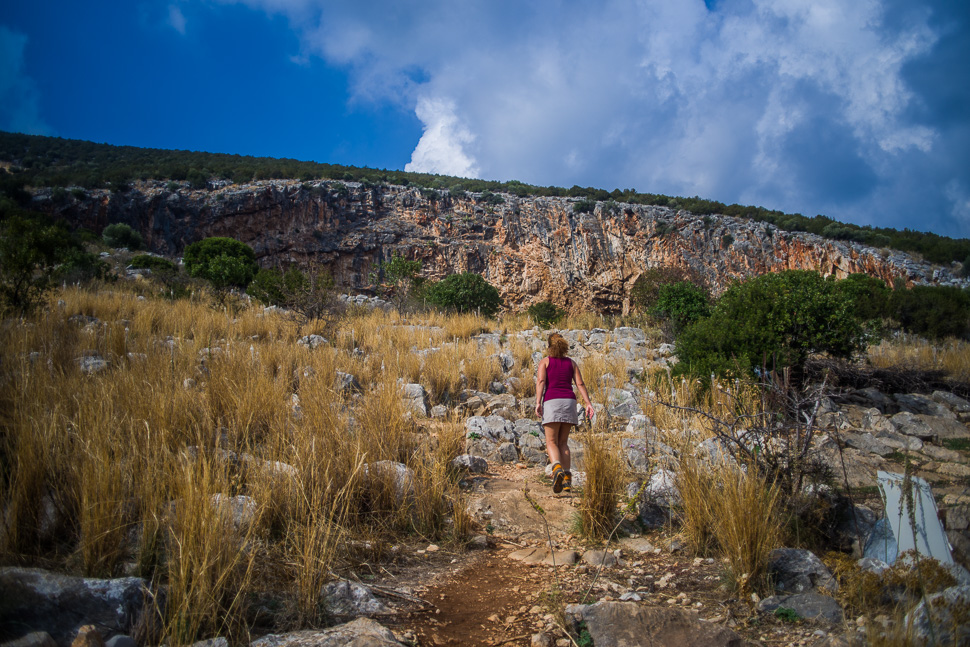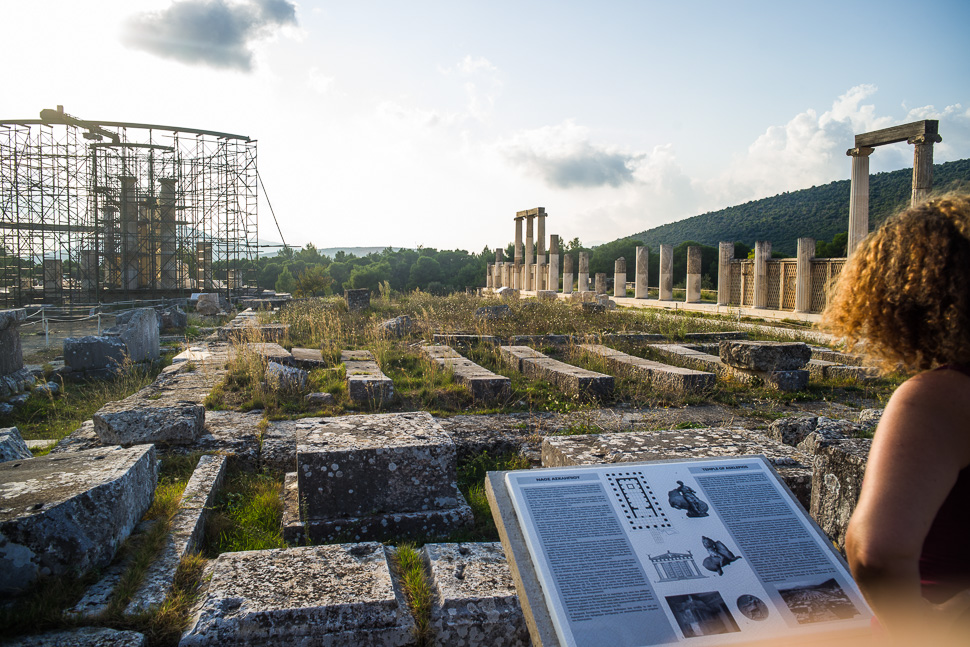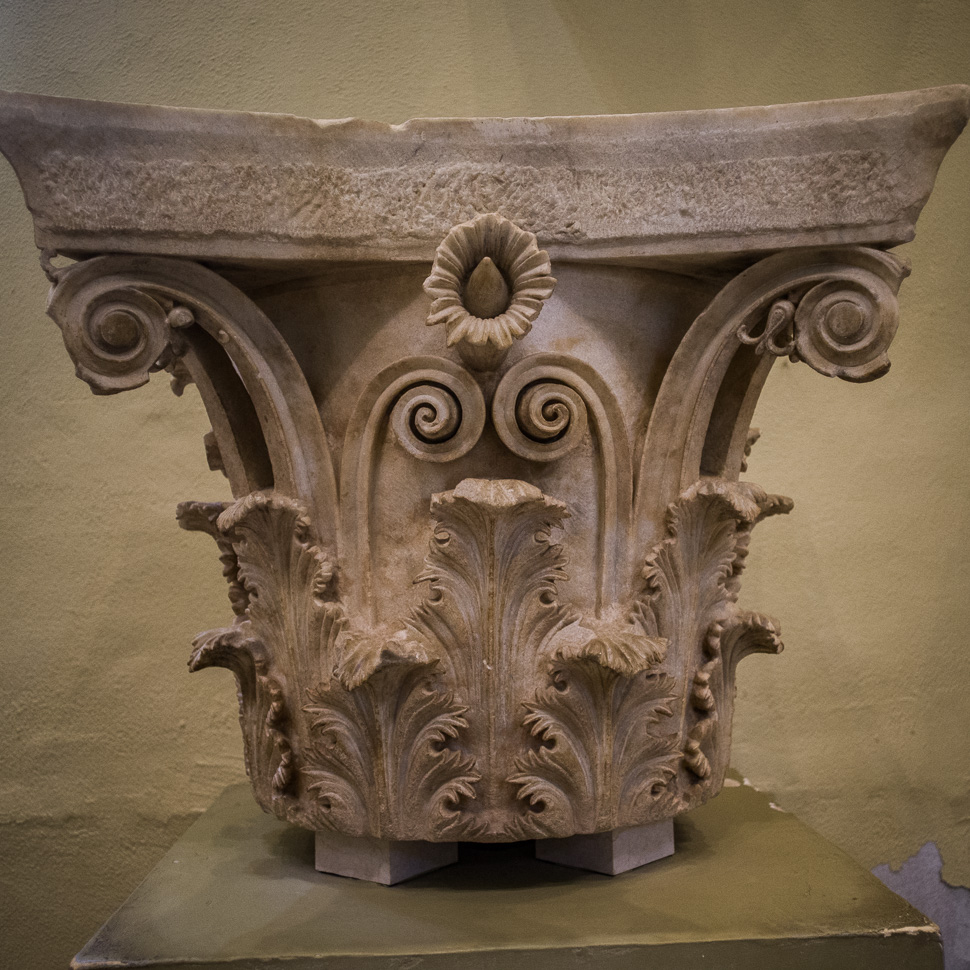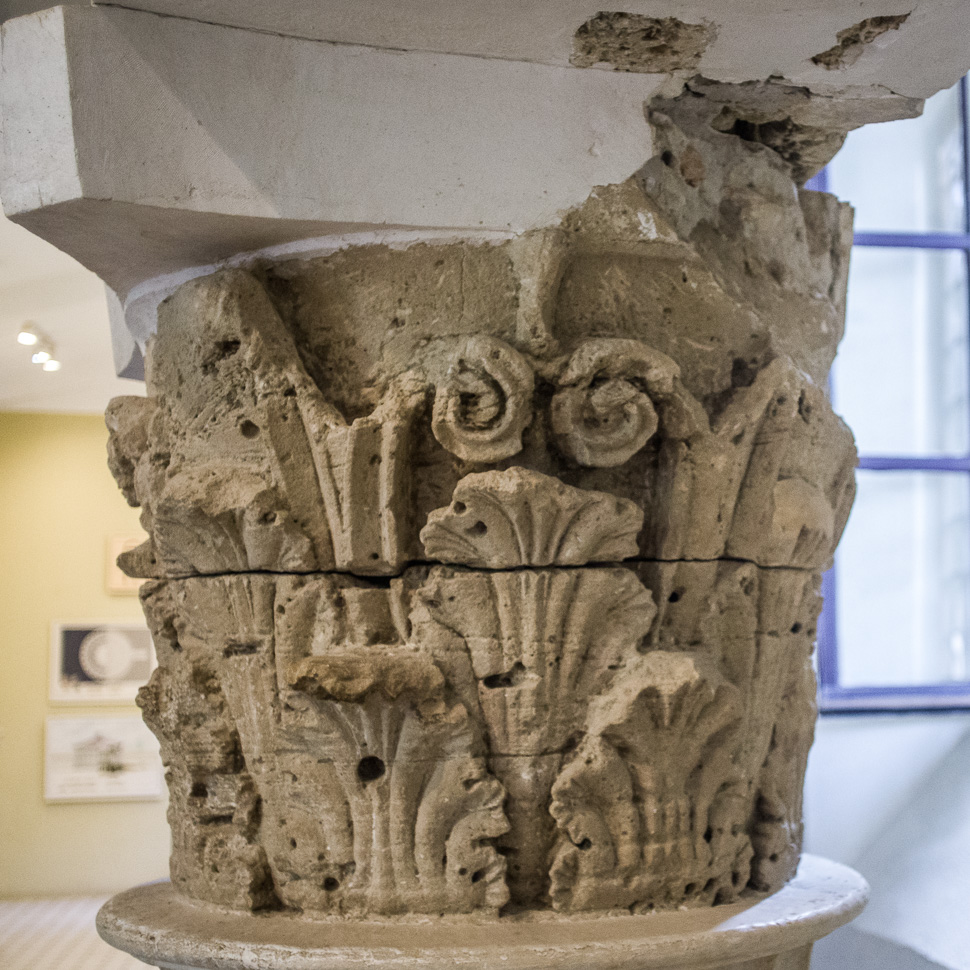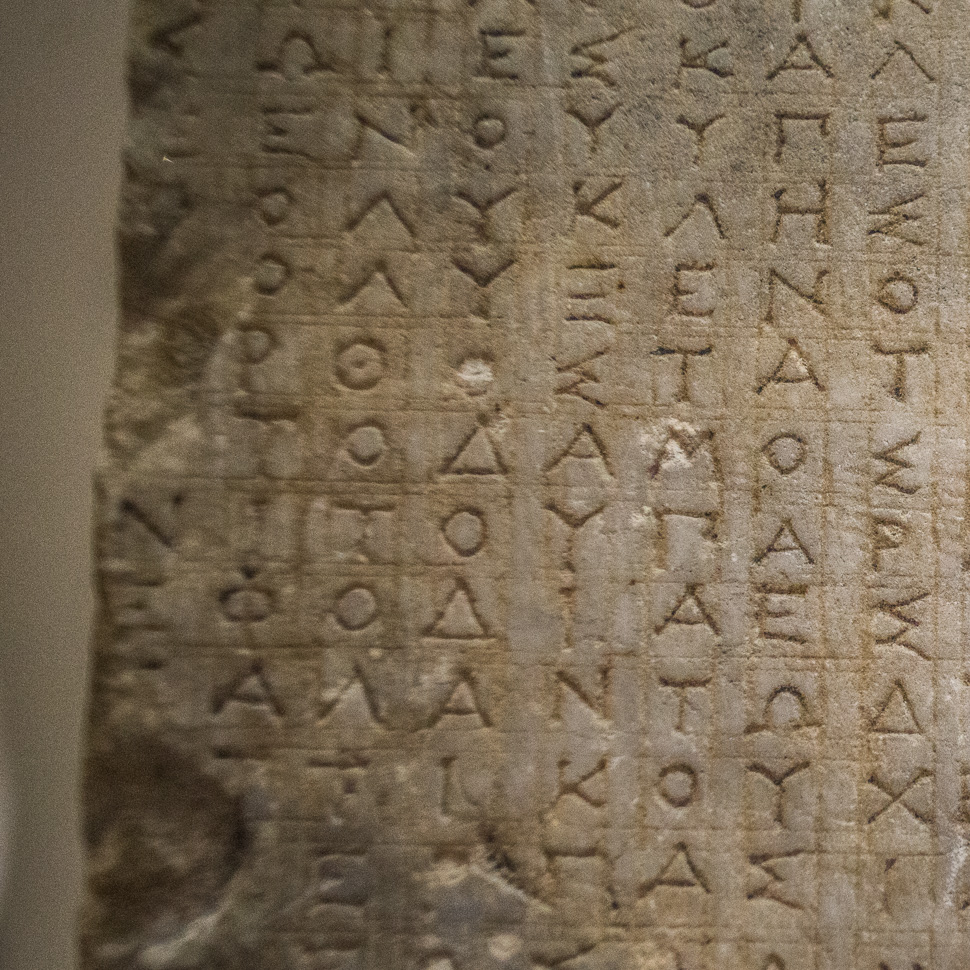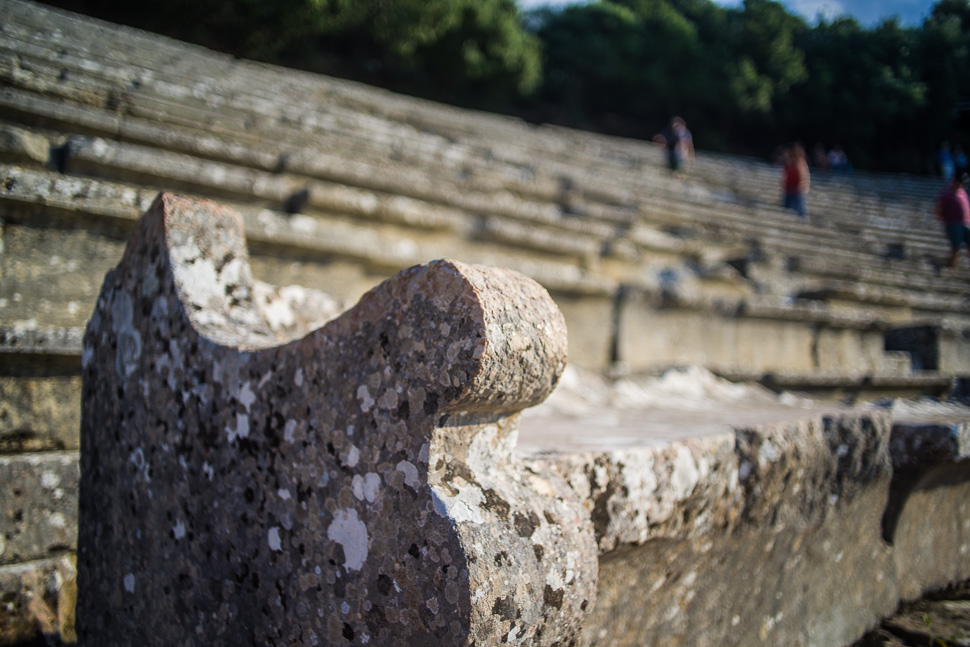From the coast we drove inland to Epidaurus but stopped first at the dolines of Didyma.
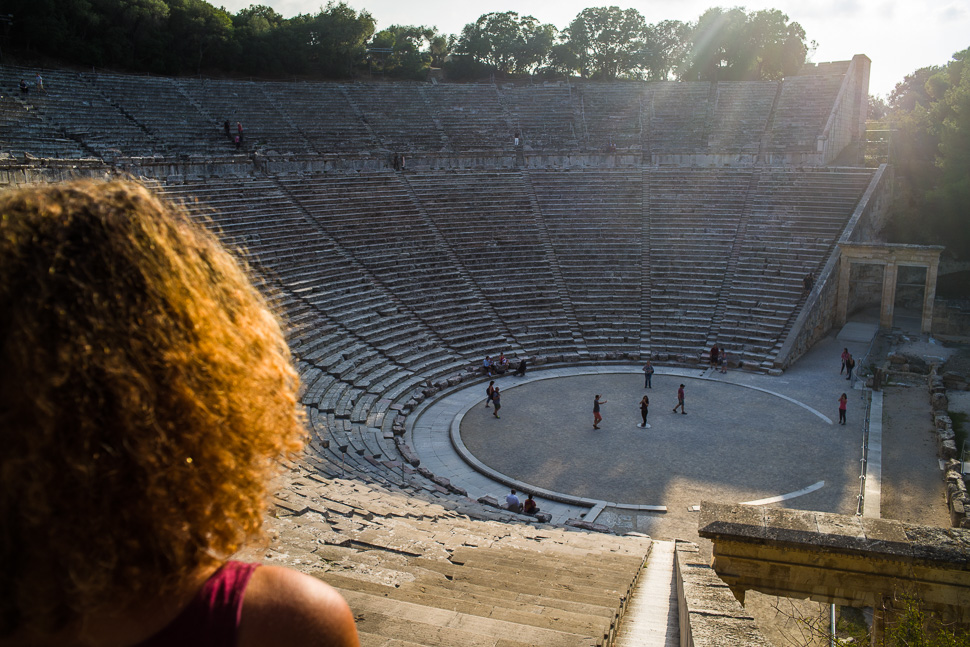 |
| The famous theatre of Epidaurus |
Outside Didyma are 2 big dolines or sinkholes. Former caves collapsed thousands of years ago and left these big holes in the ground. The first is accessible by a steep stairway dug into the ground that takes you into the doline. The second we had already spotted from the distance.
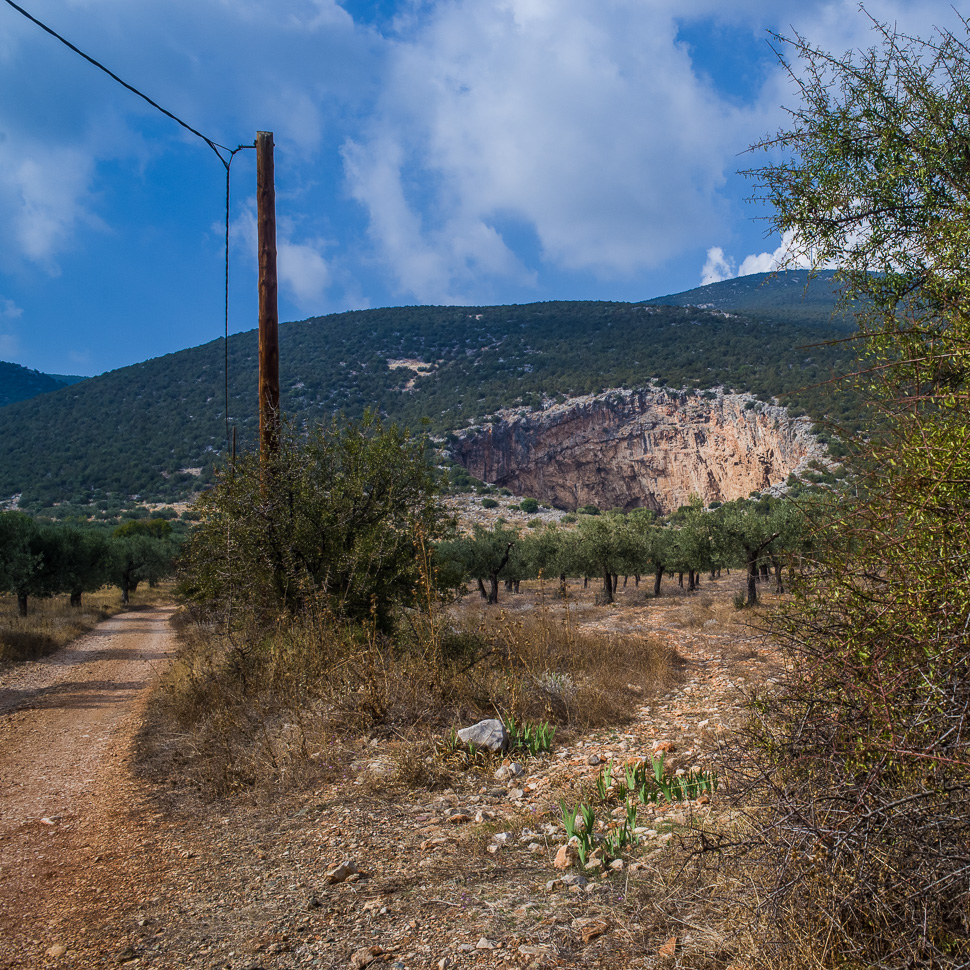 |
| Sinkhole at the side of the mountain |
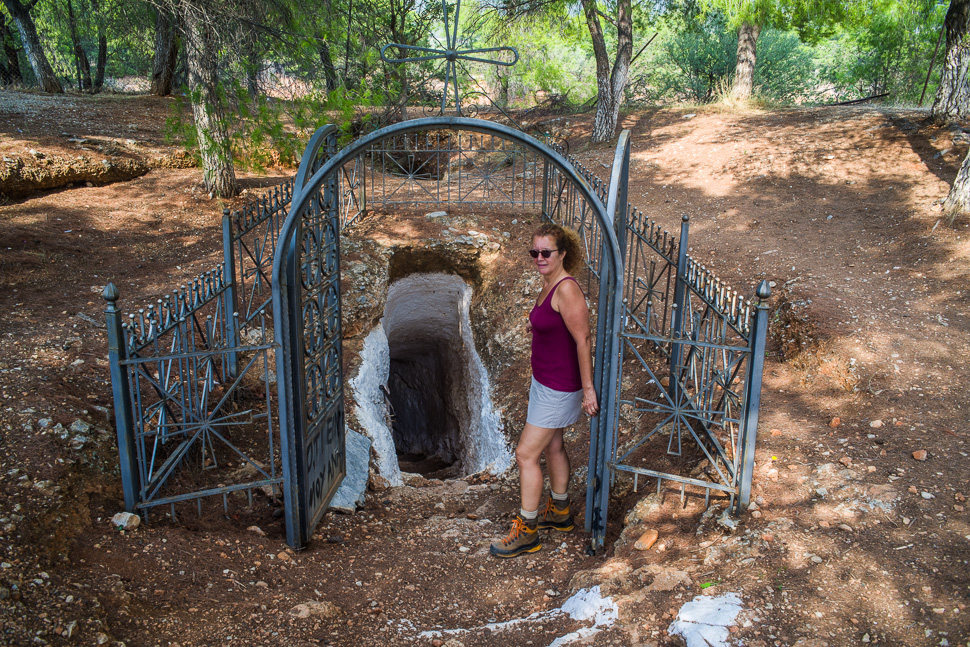 |
| Entrance into the first doline |
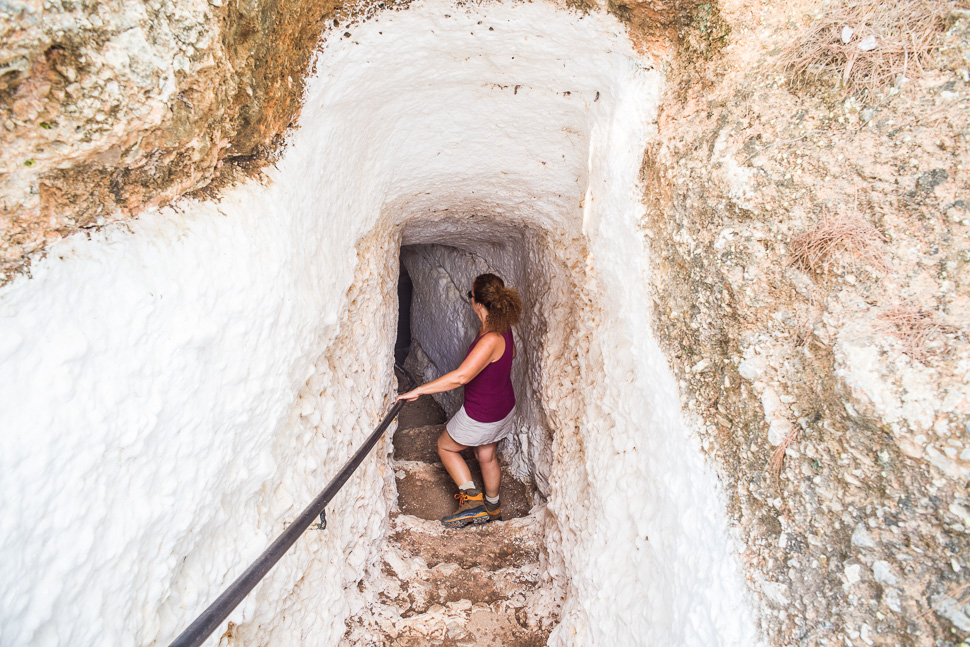 |
| A narrow tunnel leads down until you arrive at the inside of the doline … |
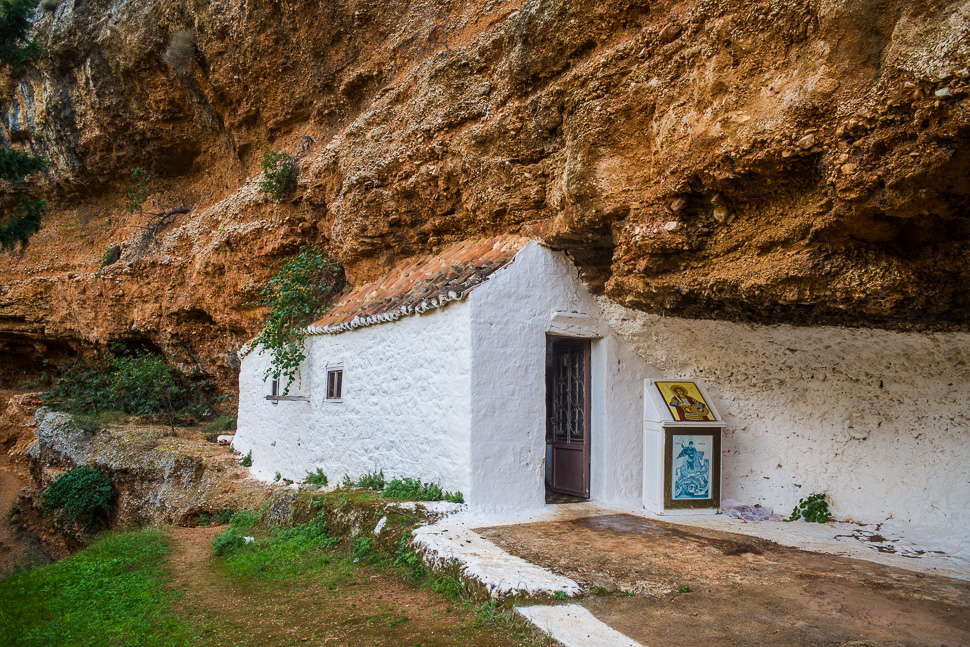 |
| … and find a Byzantine church along the wall |
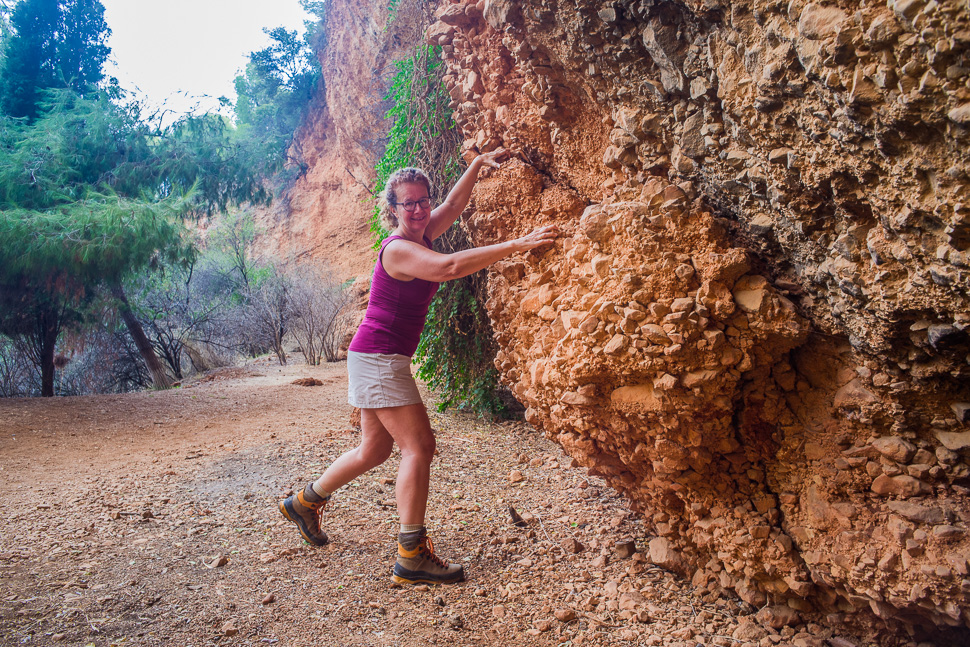 |
| Tearing the wall apart |
The second sinkhole has a diameter of around 150 meters, reaching 80 meters deep. The walls are a nesting place for many birds and their sounds are reinforced by the acoustic of the walls.
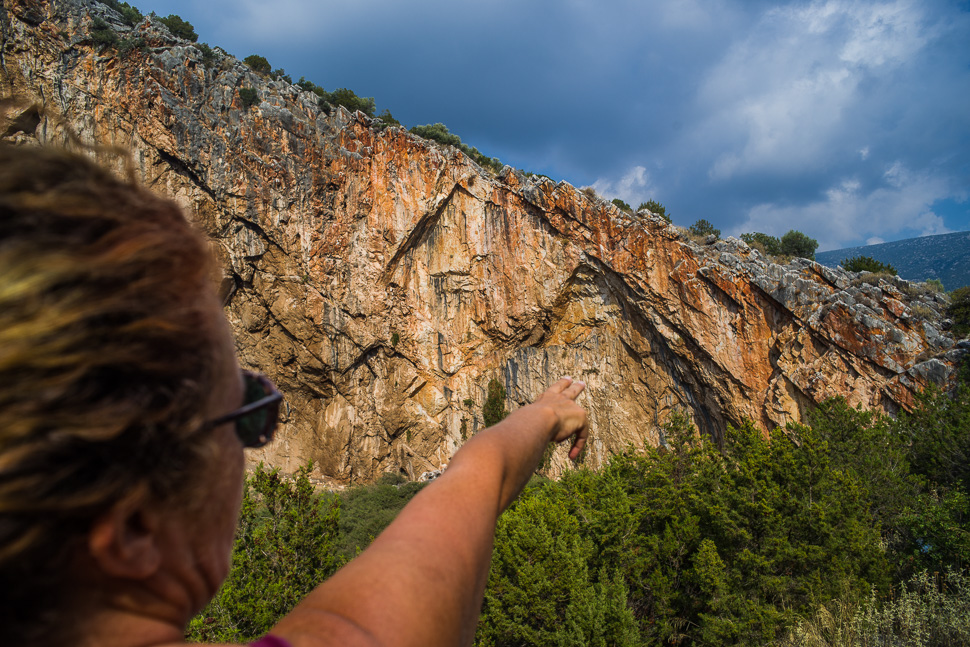 |
| Fascinating rocks |
But now it was time to get to Epidaurus, which was still an hour to the north. When we arrived in the late afternoon, most of the tourists were gone, and it wasn’t hot any more – perfect timing 😉
We learned that Epidaurus is considered to be the birthplace of Apollo’s son Asclepius the healer. The cult of Asclepius at Epidaurus is attested since the 6th century BC. It was known for its sanctuary as well as its theatre, which is once again in use today.
The asclepeion or healing temple at Epidaurus was the most celebrated healing centre of the classical world, the place where ill people went in the hope of being cured. To find out the right cure for their ailments, they spent a night in the enkoimeteria, a big sleeping hall. In their dreams, the god himself would advise them what they had to do to regain their health. Within the sanctuary there was a guest house with 160 guest rooms.
Asclepius, the most important healer god of antiquity, brought prosperity to the sanctuary, which led to an ambitious building program for enlarging and reconstruction of monumental buildings. Fame and prosperity continued throughout the Hellenistic period. Later the site was looted and raided. Today, archaeologists try to make the most out of what is left.
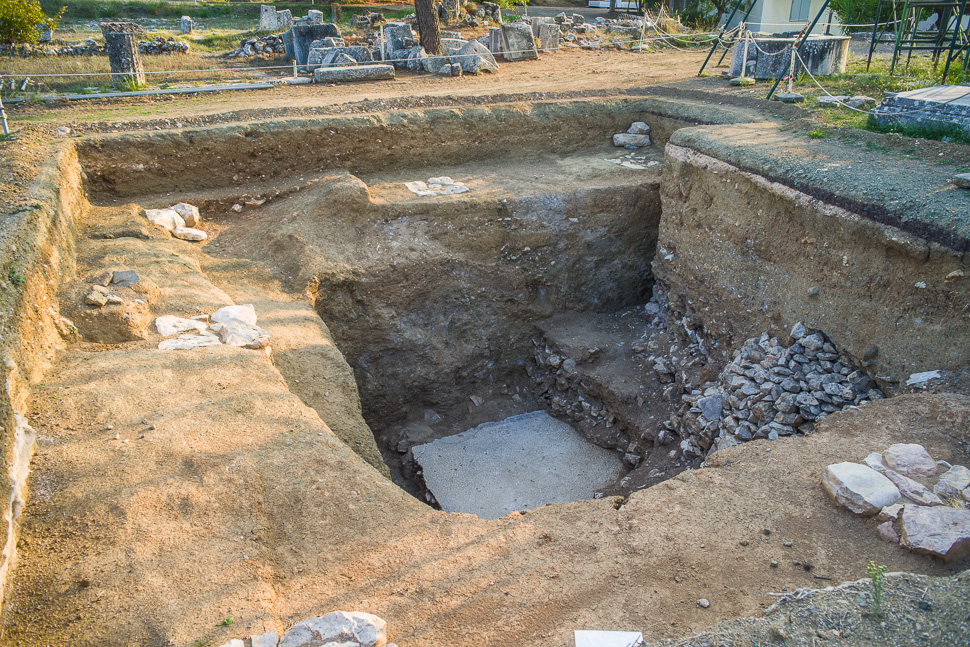 |
| Digging deep to find early traces |
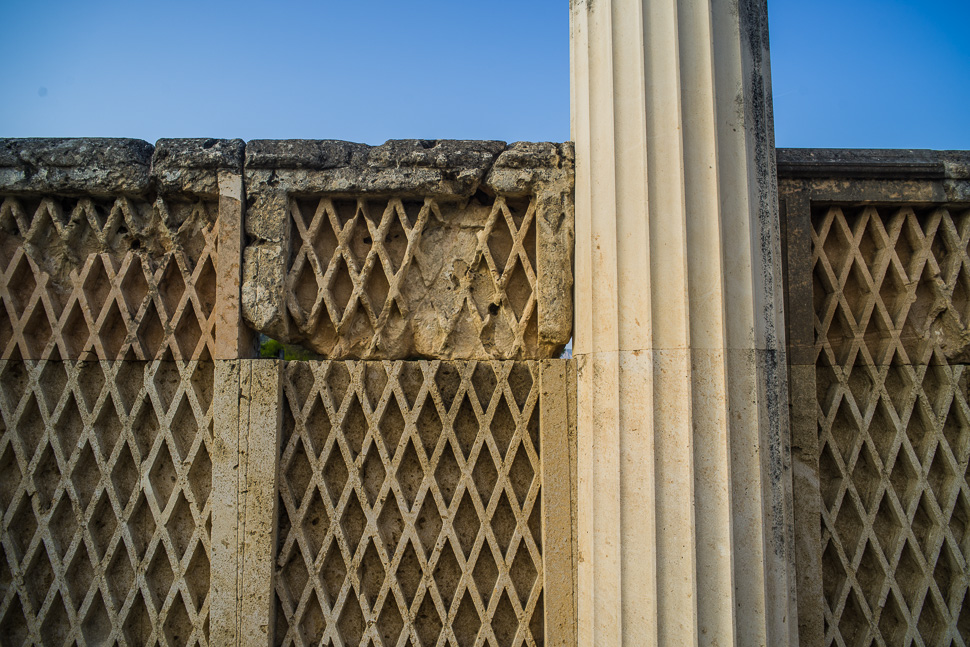 |
| The bottom of this wall is new, the upper part is antique. |
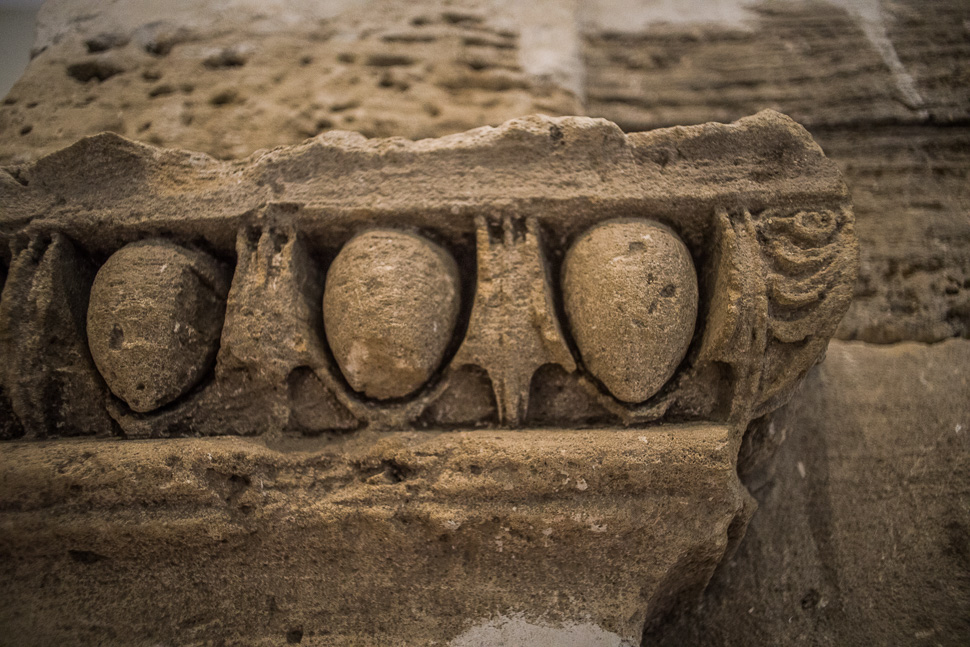 |
| Beautiful column capital |
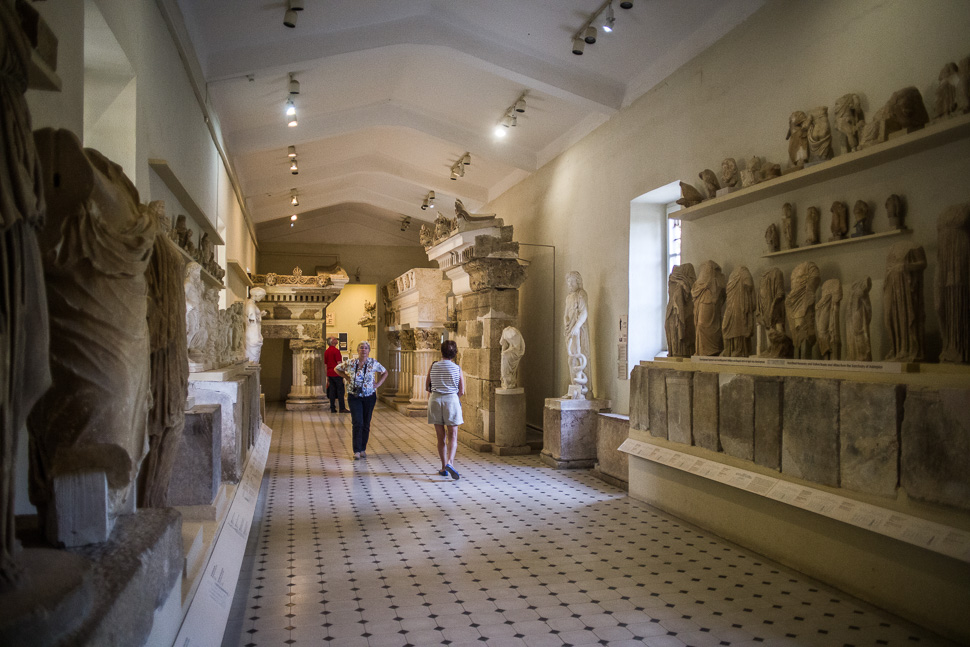 |
| Museum next to the excavations |
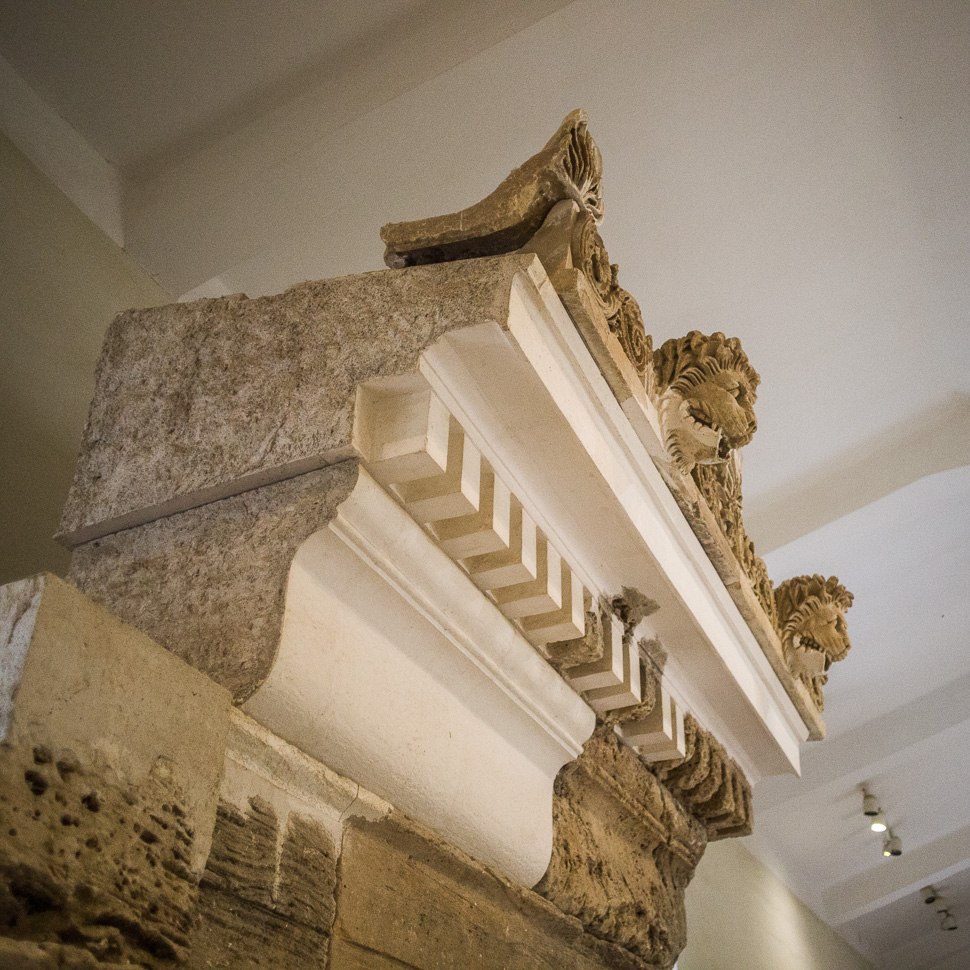 |
| Reconstructed parts of a building |
This Corinthian capital has a special story: It was found at a good distance from the temple, carefully buried in the ground. The archaeologists believe it served as a model. Below you see the remains of the same capital from the temple.
This stone slab of 2×1 metres has a Greek text engraved stating the expenses for the construction of a temple at Epidaurus in the 3rd century BC. It was found at a house where it had been reused as a threshold.
The prosperity brought by the asclepeion enabled Epidaurus to construct civic monuments, including the huge theatre, which is used again today for dramatic performances. The original 34 rows were extended in Roman times by another 21 rows. As is usual for Greek theatres (and as opposed to Roman ones) the view over a lush landscape behind the stage is an integral part of the theatre itself and is not to be obscured. The theatre is admired for its exceptional acoustics, which permit almost perfect intelligibility of unamplified spoken words from the stage to all 14,000 spectators.
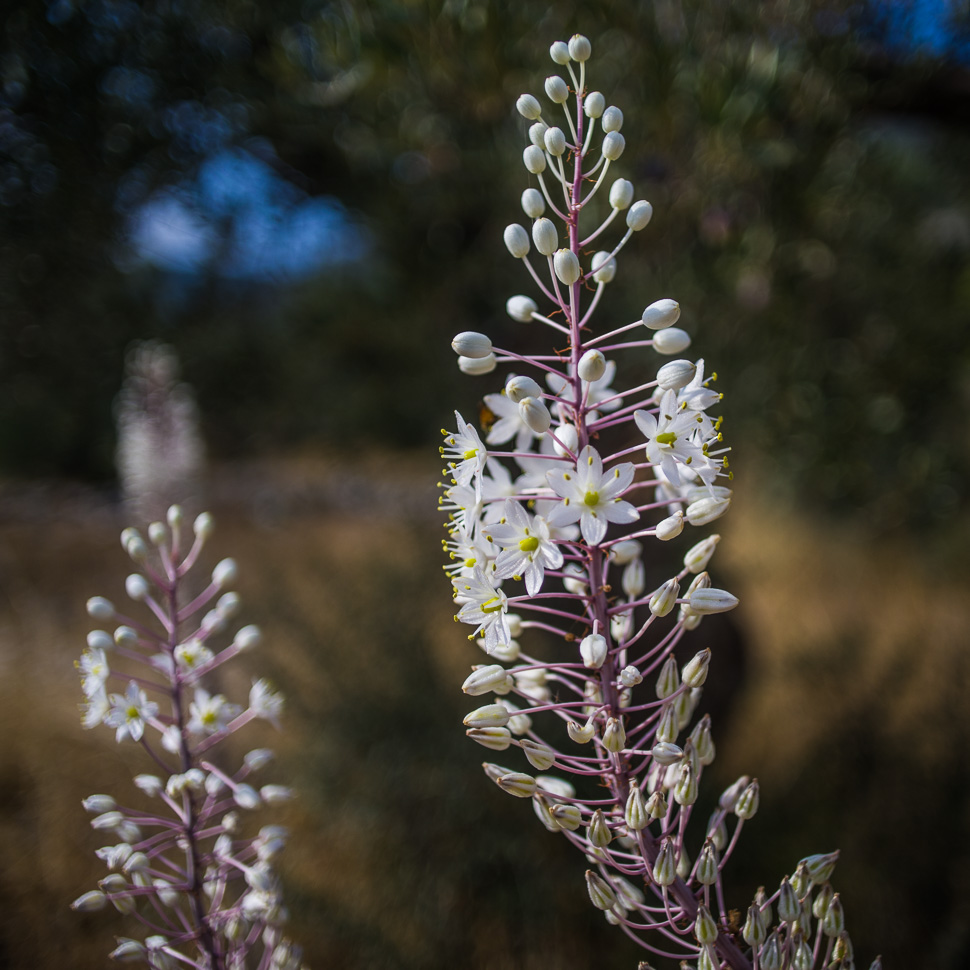 |
| Flower of the Day |






